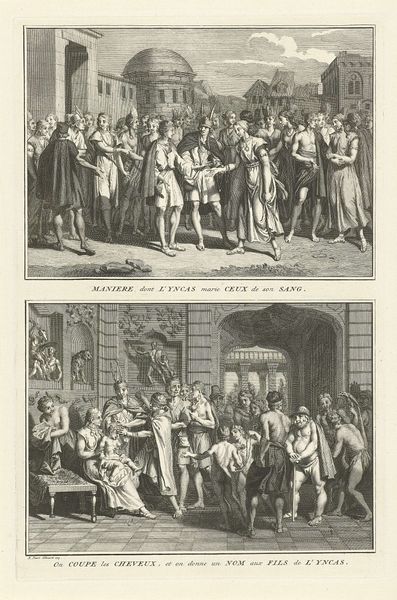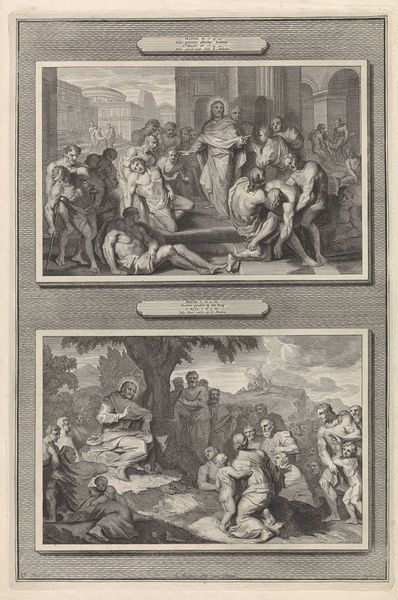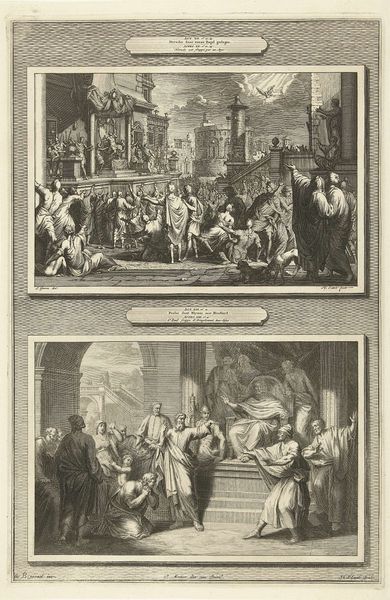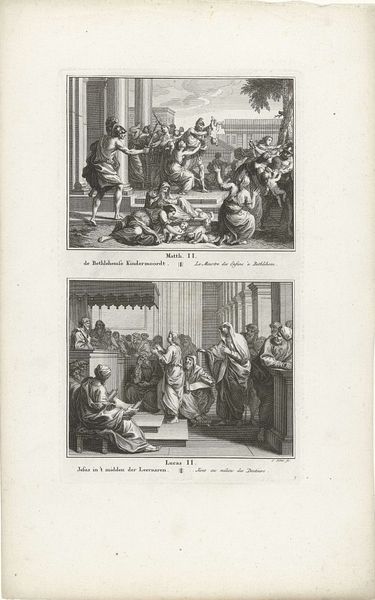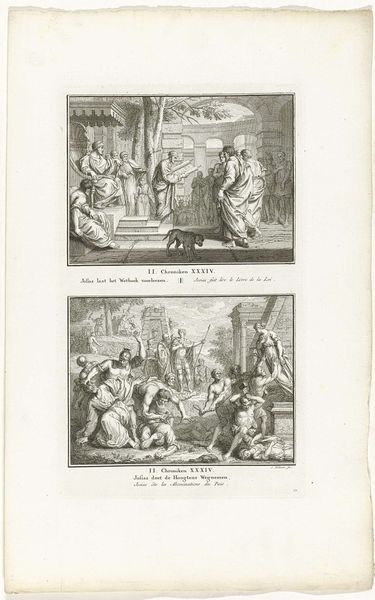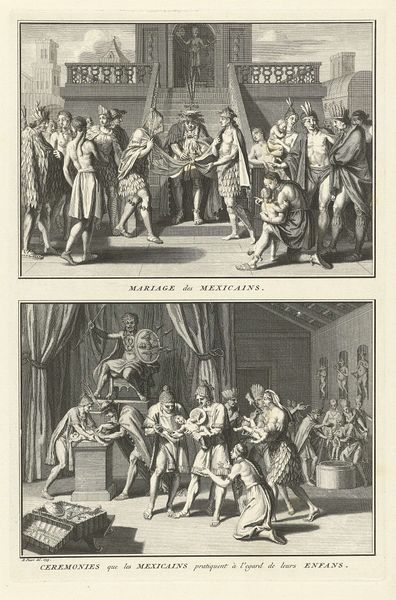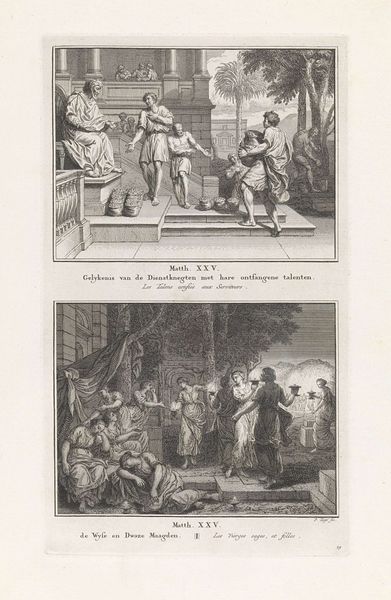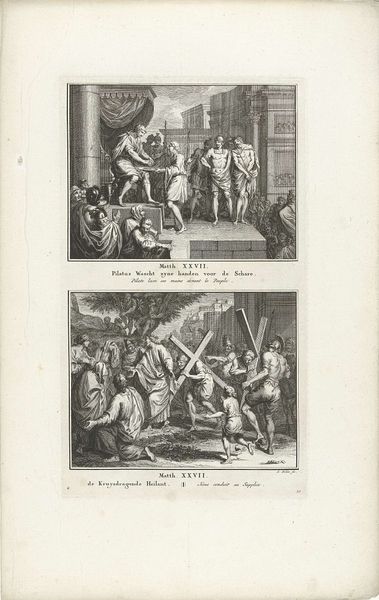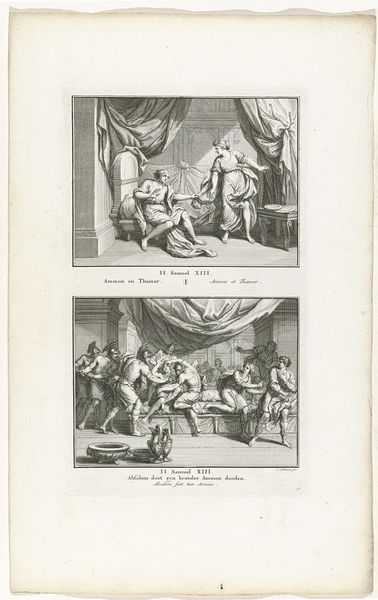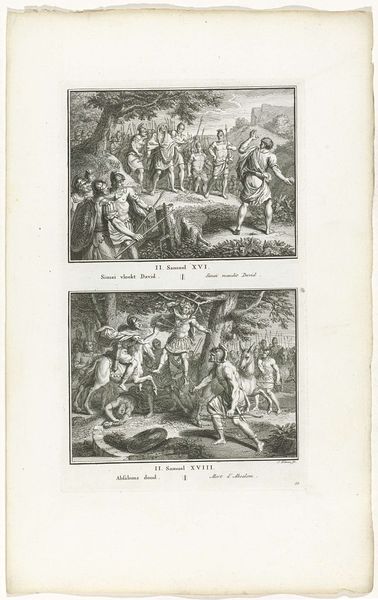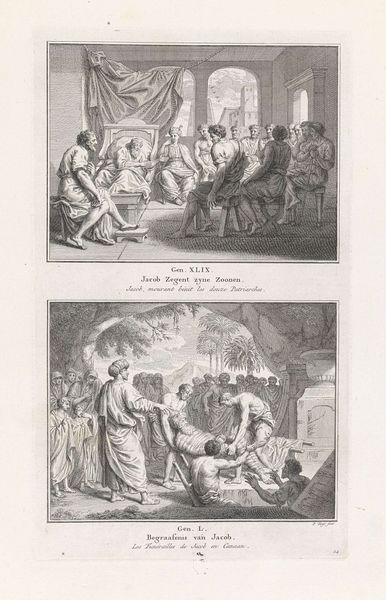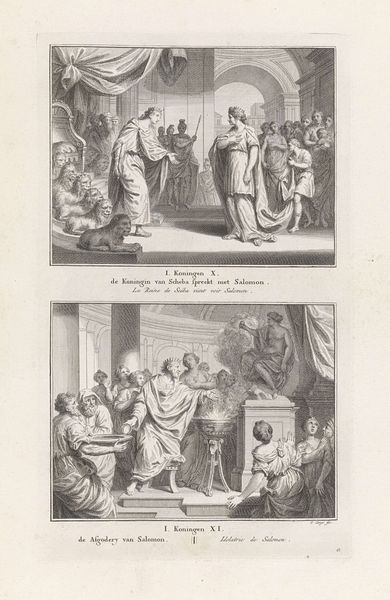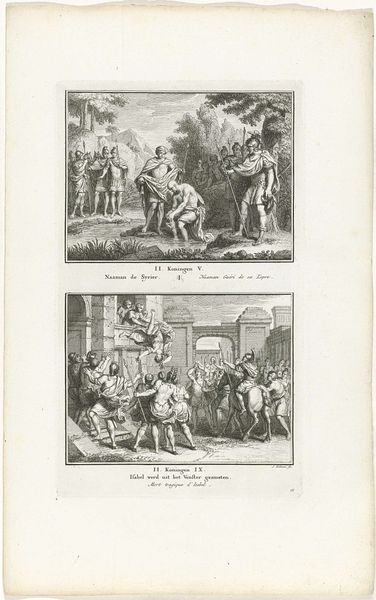
print, engraving
#
narrative-art
#
baroque
# print
#
old engraving style
#
traditional media
#
genre-painting
#
history-painting
#
engraving
Dimensions: height 335 mm, width 221 mm
Copyright: Rijks Museum: Open Domain
Editor: This is "Huwelijksplechtigheid en scheiding onder Canadezen" – Marriage Ceremony and Divorce Among Canadians – by Bernard Picart, from 1723. It's an engraving. The composition, split into two scenes, is really striking. The top depicts a wedding, the bottom a divorce. What do you see in Picart's rendering of these ceremonies? Curator: Immediately, I’m drawn to the material conditions embedded in this work. Consider the labour involved in producing this engraving, the means of its distribution. It wasn’t created in a vacuum. These images offered 18th-century Europeans a vision of "Canadians"—Indigenous peoples—filtered through a very specific lens of colonial understanding and production. What aspects of the production do you think informed the perception of these ceremonies? Editor: So, you’re saying that the European perception of Indigenous culture was shaped by how these images were made and distributed. Like, it wasn't just about what they depicted but about the act of depiction itself? The choice of engraving seems deliberate; it could have been sketches. Curator: Precisely. Engraving allowed for mass production and dissemination. And observe the details Picart *chooses* to include. It suggests a European desire to categorize and understand unfamiliar cultural practices through their own frameworks of understanding. Look at how “primitive” the ceremonies might look for a 18th century European eye. Where does this presumed “primitivism” come from? Is this really "Canadian", or is this an imagination of colonial powers? Editor: It's almost like the act of creating the engraving solidified certain beliefs and biases. It definitely offers a way to look at art with a much deeper view. Curator: Yes! And we can carry that understanding forward, recognizing how materials and the modes of artistic production always shape the message. Thinking of art and production, would you say that an engraving can truly reflect the diversity and depth of "Canadian" culture? Editor: Probably not, given the constraints and biases involved. I'll definitely consider that in the future.
Comments
No comments
Be the first to comment and join the conversation on the ultimate creative platform.
